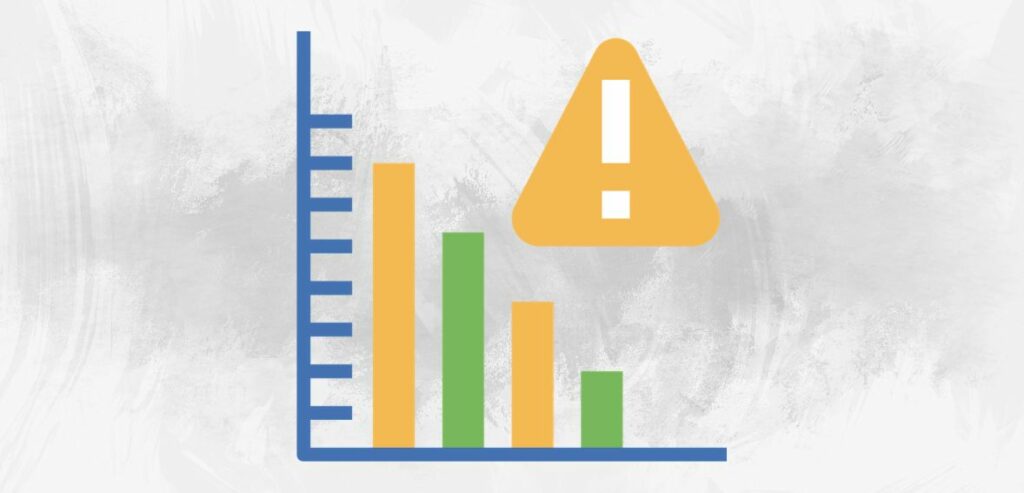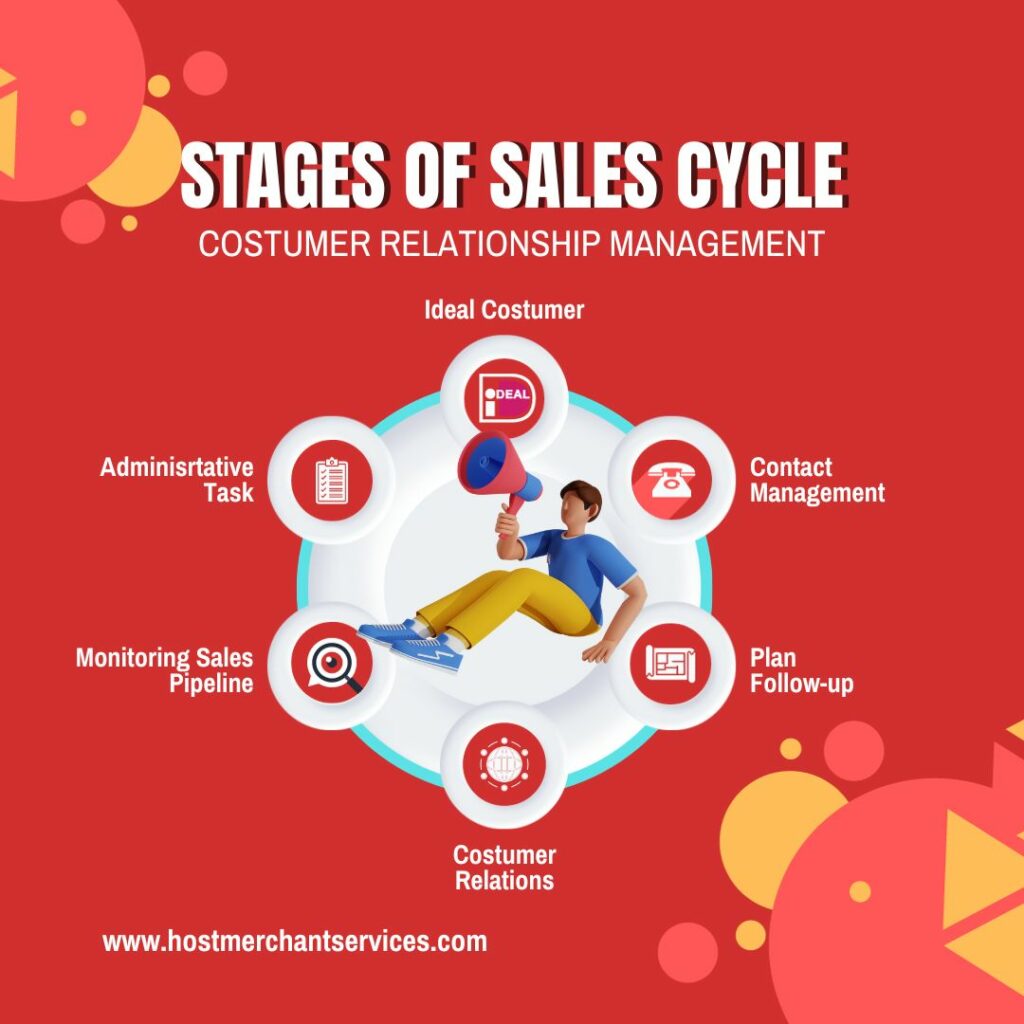Sales are the heart of any business as they serve as an indicator of success and connect customer needs to what a company offers. However, there are times when things can suddenly take a turn for the worse. You may notice leads disappearing, revenue shrinking or sales dropping. This can leave you pondering questions such as “What went wrong?” “What caused this decline?” and importantly “What steps can be taken to reverse this situation?”
When sales are down it serves as a warning sign for any business and in the worst-case scenarios it can even lead to situations like bankruptcy. Some business owners may find themselves unsure of the reasons behind this decline. That’s why it becomes crucial to have an understanding of every aspect of your sales process.
Several factors, including your marketing strategies, management practices, customer service quality, and market conditions can all have an impact on sales. Even if you believe that everything is running smoothly there might still be hidden issues affecting your revenue stream. We have outlined some causes for a decrease in sales. Whether you spot the issue right away or need to work through the list, identifying and addressing the problem is key to getting your business back on track.
How Low Sales Can Affect Your Business
Making a profit and achieving growth are crucial, for any business and one of the main factors in achieving this is sales. Sales play a role in driving business success. They provide the revenue for a company to operate effectively. Unfortunately, many business owners mistakenly believe that a lack of sales is solely an issue of its own with no effect on other operations of the business. They often overlook the monthly sales targets required to sustain their operations.

Having an understanding of the required sales volume needed to generate profits is not essential only for short-term survival but also for long-term success. Without this insight, businesses can easily find themselves busy and occupied without knowing if their efforts are pushing them forward or simply maintaining the status quo. Low sales can have widespread and profound effects on businesses, influencing various aspects. Here are some key effects:
- Shrinking Market Presence: When sales are low, a business can lose ground to competitors who are selling more, leading to a smaller share of the market.
- Hindered Growth Opportunities: Limited sales revenue can hold back a business from investing in new research, entering new markets, or introducing new products or services.
- Decreased Profitability: Low sales directly diminish a business’s profitability by slashing revenue, potentially resulting in financial losses.
- Challenges in Funding: Consistently low sales may make it tough to attract investors or secure loans, limiting access to funds for both growth and day-to-day operations.
- Cash Flow Challenges: Reduced sales can lead to constrained cash flow, making it difficult to cover expenses, invest in growth opportunities, or fulfill financial commitments.
10 Common Reasons Why Sales Are Down

1. Poor Communication in the Workplace
Good communication is key for any company to thrive, but not all businesses prioritize it. When communication falls short, it can harm your company’s reputation and affect by a large margin of 18%. If your business isn’t meeting its goals, poor communication could be the culprit. It’s essential to recognize these issues so you can take steps to improve.
For example, when there’s a breakdown in communication between departments within a company such as marketing and merchandising it can negatively impact sales. When these teams aren’t aligned it can lead to problems when making decisions about which products to promote and how much to allocate towards advertising. If the marketing team heavily promotes priced items it could result in stock prepared by the merchandising team. This mismatch could result in popular products being sold out only and missed sales opportunities on the other products.
To avoid encountering these issues and increase sales for your business it is crucial for teams to have shared goals and targets. Having a zero communication gap can facilitate better decision-making and foster more effective collaboration among team members. Here are some helpful tips for promoting clear communication within the workplace:
- Set Clear Communication Guidelines: Establish a consistent set of rules for how everyone communicates, both inside and outside the company. This could include guidelines for how your brand is represented or training on effective communication techniques.
- Build an Open Environment: Create a workplace where employees feel free to share ideas, ask questions, or raise concerns without fear. Whether it’s talking to managers or discussing issues with colleagues, everyone should feel safe to communicate openly and within the established guidelines.
- Break Down Departmental Barriers: In many companies, teams or departments work in isolation, focusing only on their specific tasks. This can lead to misunderstandings or even conflicts when one group isn’t aware of what another is doing. Encourage collaboration and open dialogue to prevent these communication breakdowns.
2. No Clarity on Your Sales Success and Failures
Successful salespeople regularly assess what’s working and what isn’t, especially since markets can change quickly. If you’re unsure about what’s driving your sales wins, you’ll struggle to replicate them. Similarly, if you don’t understand why you’re losing sales, you risk making the same errors.
Analyzing your wins and losses can reveal important insights, such as:
1. Assessing whether your sales approach is overly aggressive.
2. Identifying any disparities, between the value you place on your products and how the market perceives them.
3. Gauging the strength of your customer relationships.
4. Determining if your products genuinely fulfill customer needs.
5. Ensuring that your marketing promises align with what you deliver.
Such analysis also helps your team pinpoint strategies and areas that require improvement. By reviewing this data using tools like CRM systems you can refine your sales tactics, gain an understanding of your market position, and even recognize the contributions of team members.
Ultimately dedicating time each month to reflect on your sales data significantly increases the likelihood of closing deals. The right scale to measure success and failure can further enhance the effectiveness of win or loss reports and facilitate follow-up discussions. For instance, you may consider asking customers—whether they made a purchase or not—to rate aspects such as product quality, sales experience, and how well you compare to competitors on a scale from 1 to 10. This approach gives your team specific targets to aim for and guides future interactions with customers. It’s a practical way to set clear goals and refine your sales strategies moving forward.
3. Bad Hire
Making a poor hiring decision can be quite expensive, amounting to as much as 30% of the employee’s yearly salary. The consequences go beyond the inconvenience of restarting the hiring process; the financial toll includes training expenses and missed business opportunities. On average, a bad hire can set a company by up to $240,000.
Effective sales representatives play a crucial role in meeting sales targets and boosting profits. If you’re struggling to find qualified candidates, it might be time to reassess your hiring strategy. If the process feels daunting, partnering with a recruitment agency could be a beneficial move.
Recruitment professionals bring industry-specific expertise to the table, offering access to a broader pool of potential hires. With their assistance, you can identify and onboard the right candidate, minimizing the risk of negative impacts on your sales performance.
4. Management Flaws
Ensuring a seamless sales process requires teamwork, and only dedicated management can ensure a smooth flow. When all these elements align, the result is often increased sales and profitability. However, overlooking any inefficiencies in the management can hamper progress.

While it’s common for sales managers to point fingers at their teams when targets aren’t met, it’s essential to identify the actual gaps in the process. Ineffective sales management doesn’t just impact sales; it can also lead to broader inefficiencies within the organization. You should effectively measure the success of a sales manager, whether or not they are capable, and more importantly what they are bringing to the company. Here are some red flags an ineffective sales manager shows throughout
- Striking the Right Confidence Balance: Confidence is vital in sales, but moderation is key. Too much confidence can lead to overestimation of skills, especially among less effective sales managers. This overconfidence can result in inaccurate sales forecasts and hinder professional growth by masking areas needing improvement.
- Failing to Learn from Errors: Mistakes are inevitable, but repeating them indicates ineffective management. A proficient sales manager learns from missteps, aiming for improvement. On the other hand, an ineffective manager may not recognize errors, potentially perpetuating poor practices within the team.
- Lack of Interpersonal Skills: Successful sales managers earn respect through effective communication and understanding. They recognize individual differences within their team, avoiding a one-size-fits-all approach to leadership.
- Inconsistent Revenue Growth: Ultimately, performance metrics provide clarity. If a sales manager consistently falls short of revenue targets, it signals inefficiency, regardless of other managerial strengths.
5. Lack of Organic Web Traffic
Nowadays, a strong online presence is essential for business success. Without organic web traffic, it’s challenging to attract potential customers who could convert into sales and you are missing out on 40% revenue.
Consider this: If a company lacks a social media presence where many of its potential customers are active, it’s missing out on valuable visibility. To bridge this gap, it’s crucial to know where to find and engage with organic traffic, as these relationships can lead to sales opportunities.
Here’s how to boost organic customer engagement:
- Content Marketing: This is a cornerstone of digital marketing. Creating valuable content that resonates with your target audience can drive organic traffic to your website. To attract the right visitors without relying on paid advertising, invest in understanding and consistently implementing effective content marketing strategies.
- SEO: Search Engine Optimization is vital for improving your website’s visibility on platforms like Google. By optimizing your site using proven techniques, you increase the chances of appearing higher in search results. Good SEO not only boosts your site’s visibility but also enhances the user experience, aligning with both search engine criteria and user expectations.
- Email Marketing: Establishing a connection with individuals who engage with your content is crucial for converting normal visitors into potential leads, and eventually, into loyal customers. Email marketing serves as a powerful tool for cultivating the interest of your dedicated audience by delivering timely and pertinent content directly to their inbox. Furthermore, having an email list simplifies the process of driving traffic back to your content, enhancing engagement, and fostering long-term relationships.
6. Not Paying Attention to Competitors
It’s essential to keep an eye on what your competitors are doing, especially if they launch a groundbreaking marketing campaign or introduce a superior product that outshines yours. Being aware allows you to respond promptly and effectively.
However, while it’s beneficial to be informed, it’s equally important not to become overly fixated on your competitors. Directly mimicking their strategies can divert your company’s focus and undermine the unique value you offer. For instance, in some sectors like cybersecurity, following the crowd by hosting identical webinars or using similar sales tactics can lead to a competitive race that erodes profitability.
Instead of imitating, strive to differentiate your brand. Offer something distinct that sets you apart. That said, there’s still value in observing competitors to glean insights such as:
Who they are targeting.
How their offerings differ from yours.
Their approach to addressing industry challenges.
The expertise level of their sales team and executives.
Their upcoming product developments.
Any strategic technological advancements they’re pursuing.
7. Your Business Lags in Customer Experience
If your sales are on the decline, a possible culprit could be the lack of added value you’re offering to customers. Brands that excel in customer experience rake in nearly six times more revenue than those that don’t prioritize it. Your competitors might be enticing customers with perks like free shipping or hassle-free returns, putting you at a disadvantage. Even if you offer similar products, the absence of such incentives could cost you sales. To stay competitive, it’s crucial to be aware of what perks your rivals are providing and consider matching or exceeding them.
Another effective strategy is implementing loyalty programs. These programs can encourage repeat business by offering rewards for frequent shopping. However, the key to a successful loyalty program lies in its clarity: customers should easily understand how to earn points, what rewards they can expect, and how close they are to redeeming them. A well-executed loyalty program not only fosters customer loyalty but can also give your sales a significant boost.
8. Overlooking Upselling and Cross-Selling
Over 18% of sales professionals focused more on retaining existing customers than acquiring new ones. This highlights an important sales principle – the potential revenue from a customer doesn’t stop after the first purchase.
To maximize sales from existing clients, consider upselling or cross-selling. These strategies can significantly enhance your revenue. For instance, placing protective phone cases next to the phones can lead to additional sales. Upselling involves encouraging customers to choose a higher-priced item or add-on, like suggesting a more advanced phone model or a complete bedroom set when they come in looking for just a bedside table.
9. No Proper Sales Training
New sales representatives face a range of challenges daily, from handling data to managing rejection. Effective sales management training provides these reps with a structured approach to navigate these challenges and close deals successfully. This training includes creating helpful resources, using the right tools, and organizing learning sessions to enhance performance and drive revenue.
Without adequate training, managers may struggle to improve team efficiency and achieve desired business outcomes. So, is sales training essential? Absolutely. Top-performing organizations prioritize tailored training for their sales teams.
If training isn’t given enough attention, it could be a significant factor contributing to decreased sales. Effective sales training goes beyond theory, incorporating real-life examples. Additionally, having a dedicated mentor to guide reps and ensure they have sufficient time to meet their performance goals is crucial.
10. Poor Follow-Up in Sales
Consistent follow-up with potential customers can make a significant difference in sales success, regardless of the method used—be it calls, emails, texts, or social media messages. The key is maintaining that connection over time as 80% of potential leads require at least five follow ups whereas sales reps follow up once or twice at most.
Not every prospect will be ready to make a purchase when you first engage with them, and that’s alright. Regular follow-ups help keep your business top-of-mind for when they are ready to buy. This consistent communication increases the likelihood they’ll choose your offerings over competitors.
If your sales representatives aren’t effectively following up on qualified leads, it can negatively impact your sales outcomes. Tools designed to assist with reminders and tracking, like sales enablement software, can be beneficial. Additionally, utilizing a structured CRM system is vital for effective and measurable follow-up in successful sales teams.
Conclusion
The health of a business largely depends on its sales performance. When sales decline, it’s crucial to identify the root causes promptly to initiate corrective actions. Factors such as poor communication, ineffective management, and overlooking customer experience can significantly impact sales outcomes. Additionally, the absence of competitive awareness, inadequate training, and insufficient follow-up strategies can further exacerbate the situation.
By addressing these common pitfalls and implementing targeted strategies, businesses can not only recover from a sales slump but also position themselves for sustainable growth. Regular assessment, continuous learning, and a customer-centric approach remain pivotal in navigating the complexities of the sales landscape.
Frequently Asked Questions
What can cause a decline in sales?
Beyond the obvious factors of overpricing or underpricing, other reasons for sluggish sales include perceptions of affordability and value. If prices seem too steep, customers might feel the product isn't worth it. Likewise, overly low prices might spark concerns about quality.
Why am I not getting sales even though I am doing everything right?
Even when you've done everything right in sales—like targeting the right customers and presenting a compelling offer—some prospects might still decline. This can happen if it's not the right time for them due to ongoing projects or if their financial situation has changed.
So, what's the solution? Sometimes, a rejection can't be immediately reversed. In such cases, it's beneficial to maintain regular communication. By staying in touch, you increase the chances of winning their business when circumstances become favorable. Ask yourself: Are you reconnecting with past prospects? Are you keeping potential leads engaged?
It's important to recognize that even with a strong sales approach, external factors can influence outcomes. Yet, it's equally crucial to assess the quality of your offering and your sales skills. Is your product priced competitively and does it offer clear benefits? Are you effectively communicating its value? These factors play a significant role in the success of your sales efforts.Why might sales numbers vary over time?
Sales can fluctuate due to a range of influences, including competitive activity, seasonal trends, product availability, shifts in customer preferences, broader economic factors, and the impact of marketing initiatives.
How can I boost my sales figures?
To ramp up sales, consider diversifying your product line, targeting new markets, amplifying your marketing efforts, or enhancing customer service. For manufacturers, this might also involve scaling up production to meet increased demand.
What are common pitfalls leading to unsuccessful sales efforts?
A key reason sales efforts often falter is ineffective time management. Sales professionals need to allocate their time wisely—whether it's researching leads, making calls, advancing prospects through the sales funnel, or delivering persuasive presentations.


